


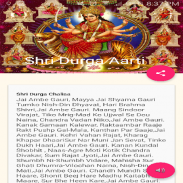
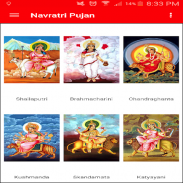
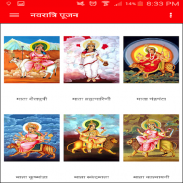
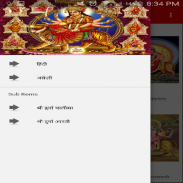
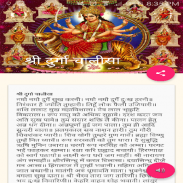
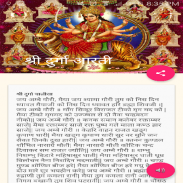

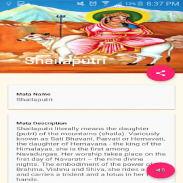
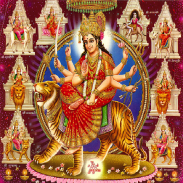
Navratri Pujan Vidhi Vidhan

Deskripsi Navratri Pujan Vidhi Vidhan
Navratri is a Hindu festival of worship and dance. The word Navratri literally means nine nights in Sanskrit; Nava meaning Nine and Ratri meaning nights. During these nine nights and ten days, nine forms of shakti/Devi i.e. female divinity are worshipped.
The nine night’s festival of Navratri begins on the first day of Ashwina of the bright fortnight. The festival comes to an end on the tenth day of Vjay Dashmi or Dussehra, when the idols of the Goddess Shakti are immersed in the river. Dussehra, meaning ‘ten days’, becomes dasara in popular parlance. The Navratri festival or ‘nine day festival’ becomes ‘ten day festival’ with the addition of the last day, Vijayadashami which is its culmination. On all these ten days, the various forms of Mother Mahisasura-mardini (Durga) are worshipped with fervour and devotion.
The nine nights are dedicated to the three main goddesses of Hinduism – Parvati, Lakshmi and Saraswati. Navratri is separated into sets of three days. First three days of Navratri are dedicated to Goddess Durga, the Goddess of power and energy. Next three days of Navratri are dedicated to Goddess Lakshmi, the Goddess of wealth and prosperity. The final three days belong to Goddess Saraswati who is worshipped to acquire the spiritual knowledge.
Goddess Durga is also worshipped under nine different names for the nine days in Navratri. Every day, she assumes a new character, a new look and a new duty. These nine forms of manifestation are Shailaputri, Brahmachartini, Chandraghanta, Kushmanda, Skandamaata, Kaatyayani, Kaalratri, Mahagauri and Siddhidaatri. For the initial six days Puja celebrations are limited to home. The celebrations acquire a festive form since the seventh day when the festivities of Navratri surround the atmosphere.
Navratri adalah festival Hindu ibadah dan tari. Kata Navratri harfiah berarti sembilan malam dalam bahasa Sansekerta; Nava berarti Sembilan dan Ratri berarti malam. Selama sembilan malam dan sepuluh hari, sembilan bentuk shakti / Devi yaitu keilahian perempuan disembah.
Festival sembilan malam dari Navratri dimulai pada hari pertama Ashwina dari dua minggu yang cerah. Festival ini berakhir pada hari kesepuluh dari Vjay Dashmi atau Dussehra, ketika berhala Dewi Shakti tenggelam di sungai. Dussehra, yang berarti 'sepuluh hari', menjadi dasara dalam bahasa populer. Festival Navratri atau 'sembilan hari festival' menjadi 'sepuluh hari festival' dengan penambahan hari terakhir, Vijayadashami yang puncaknya. Pada semua sepuluh hari ini, berbagai bentuk Ibu Mahisasura-Mardini (Durga) disembah dengan semangat dan pengabdian.
Sembilan malam yang didedikasikan untuk tiga dewi utama Hindu - Parvati, Lakshmi dan Saraswati. Navratri dipisahkan menjadi set tiga hari. Pertama tiga hari Navratri berdedikasi untuk Dewi Durga, Dewi kekuatan dan energi. Berikutnya tiga hari Navratri berdedikasi untuk Dewi Lakshmi, Dewi kekayaan dan kemakmuran. Tiga hari terakhir milik Dewi Saraswati yang disembah untuk memperoleh pengetahuan spiritual.
Dewi Durga juga disembah di bawah sembilan nama yang berbeda untuk sembilan hari di Navratri. Setiap hari, dia menganggap karakter baru, tampilan baru dan tugas baru. Sembilan bentuk manifestasi yang Shailaputri, Brahmachartini, Chandraghanta, Kushmanda, Skandamaata, Kaatyayani, Kaalratri, Mahagauri dan Siddhidaatri. Untuk awal enam hari perayaan Puja terbatas pada rumah. Perayaan memperoleh bentuk meriah sejak hari ketujuh ketika perayaan Navratri mengelilingi atmosfer.

























